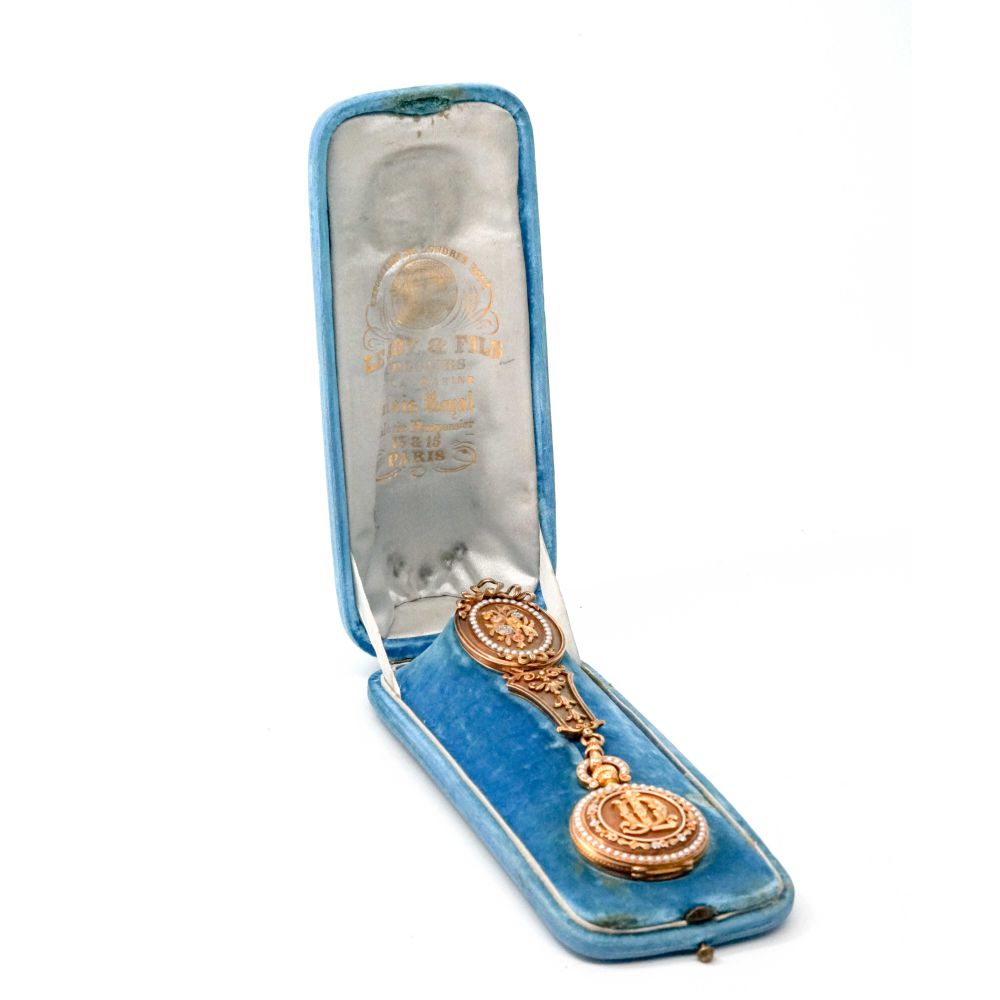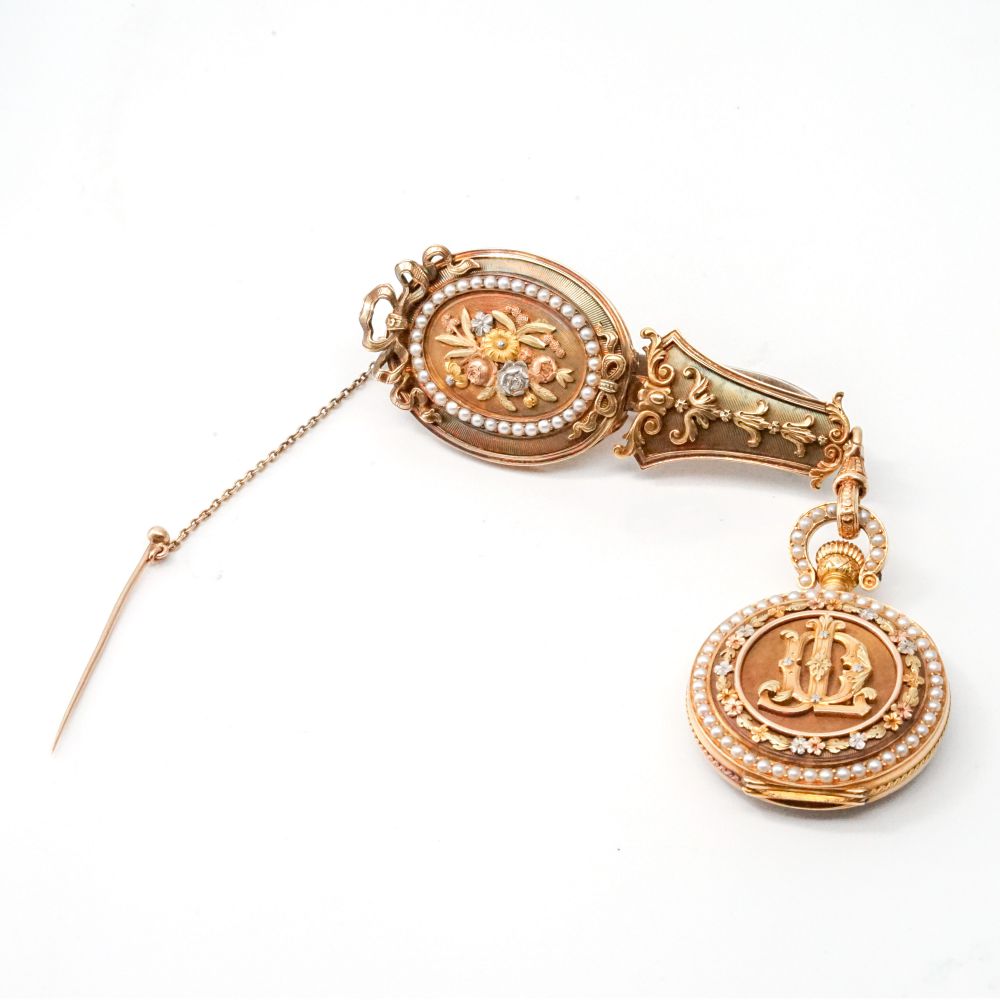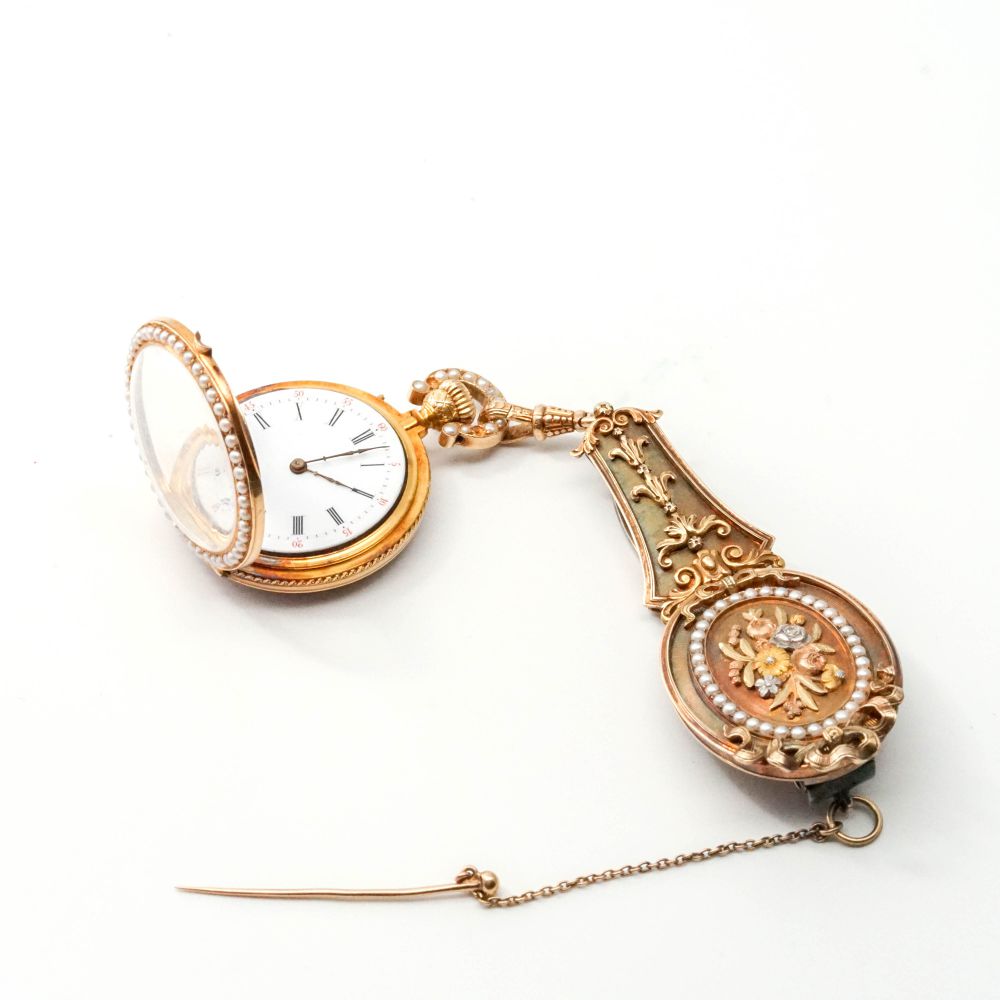19th Century Square-shaped Self-winding Pocket Watch
Inventory Number: PW2206008
Made circa 1880 in Genève, probably made by Hahn Frères et Cie (Charles Hahn & Cie, Le Landeron). 49 mm diameter, silver open-face case, case-back engraved and chiseled with flowers and foliage. White enamel dial with radial Roman numerals, blued-steel spade hands, marked LOEHR PATENT, power reserve indicator at 2 o’clock, subsidiary seconds at 10 o’clock.
A square-shaped self-winding movement, lever escapement, and bimetallic compensation balance. Movement with pendulum flywheel (pedometer-winding, self-winding, step counter principle), based on German Patent No. 211,280 for the invention granted on January 7, 1879, to August von Loehr (1847-1917), watchmaker at Vienna, Austria.
Functions: Hours, minutes, small seconds, and power reserve indicator.
About August Von Loehr
August von Loehr invented a self-winding pocket watch in 1875, for which he received German patent no.211,280 on January 7, 1879. In 1878 von Loehr applied for an English patent for a pocket watch movement with automatic winding via a pendulum flywheel (pedometer-winding, step counter principle). He had pocket watches with this movement made by the London company Self-winding Watch Co. Two case designs were used: round and square. The latter was developed by the Swiss watch company Hahn Frères & Cie., Von Loehr's pocket watch was the only automatic watch of this type that was widely used. About 4000 of the round versions were made and sold. Loehr had the winder and the case bow protected by patents DE 1903, DE 3939, DE 14939, GB 1473 (1880), and GB 4781 (1880).




